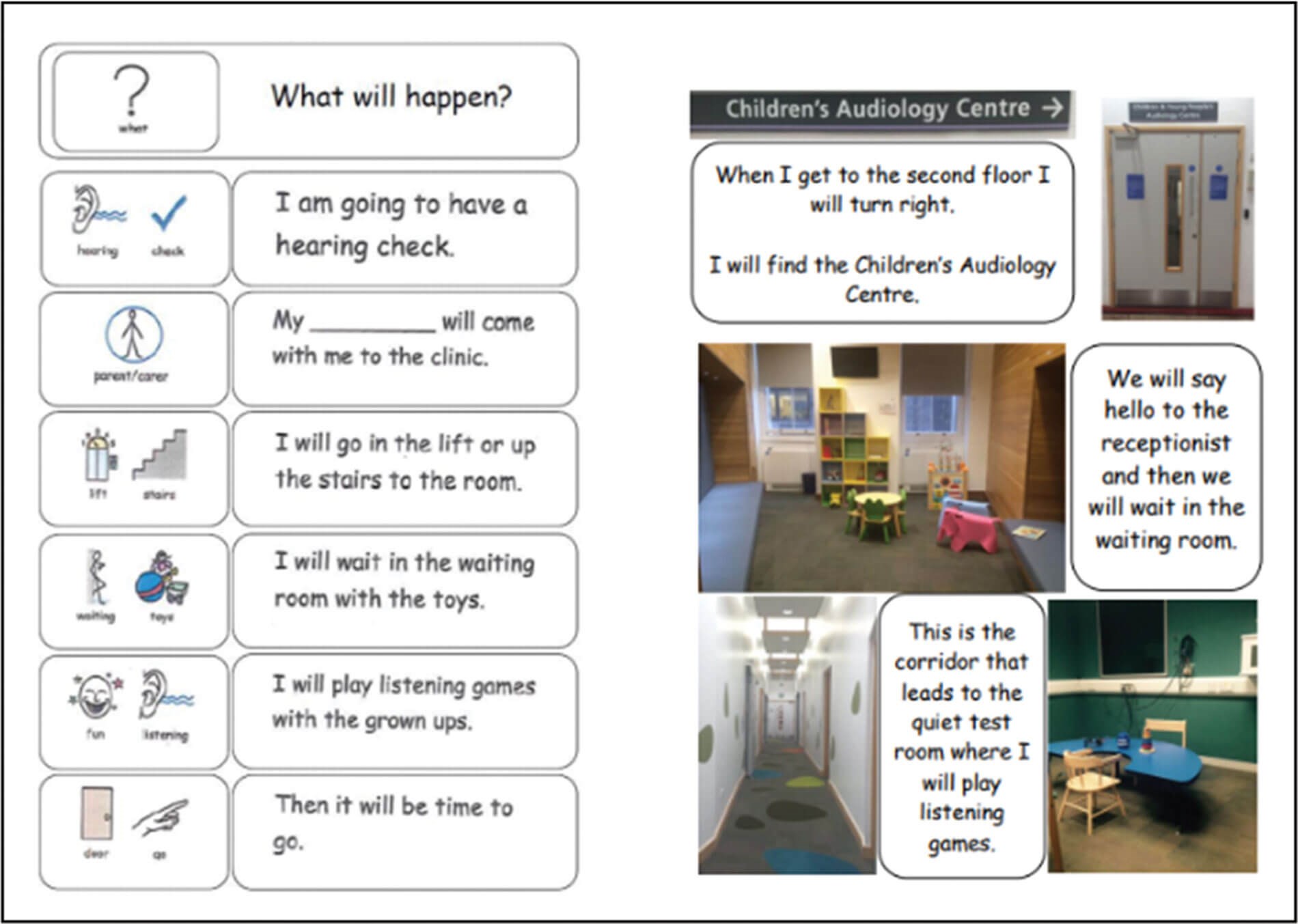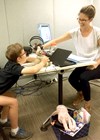In 2014 the Hummingbird Clinic was opened, offering a bespoke clinic for children with complex needs or autism. In this article Keiran Joseph shares the wealth of knowledge gained in this clinic over the years and offers some top tips for anyone involved with testing this patient group.
For many years, audiologists have observed that children with complex needs or social communication disorders such as autism often require several appointments to establish conclusive hearing test results in a traditional audiology test environment. Back in 2010, the paediatric audiology team at Guys and St Thomas’ NHS Foundation Trust recognised this and began thinking about how this assessment process could be made more effective by designing a clinic around the specific needs of a child with complex needs or autism.
From this work, the concept of the ‘Hummingbird Clinic’ was developed. The clinic was eventually opened in 2014 and has provided care for over 100 patients a month since. Included below are the ‘top tips for testing’ developed from this wealth of experience:
Prepare yourself
One of the key resources used in the Hummingbird Clinic is a pre-assessment questionnaire that allows us to prepare ourselves for the appointment. The questionnaire explores the child’s behaviours, likes and interests, as well as calming strategies. This information can be used to tailor the appointment to the individual needs of the child. For example, if they are interested in fire engines, being able to talk to them about fire engines as you call them from the waiting room and having some fire engines ready and waiting when they enter the clinic space makes it a far more welcoming environment and eases that transition from the safe waiting room to the scary clinical room.
The creation of a short pre-assessment questionnaire is simple to do and can be carried out when booking the appointment, so shouldn’t place significant demands on resources but could make a vast difference to appointment success.
Prepare the family
Another of the resources used in the Hummingbird Clinic is a social story that talks you through the basic overview of an appointment, from arriving at the department to the tests and procedures you might expect, but in accessible words, images and symbols. The social story is sent to the family in advance of the appointment so that the parent and child can read it together to begin to prepare themselves by understanding what is expected of them.
“Adding bespoke images to most of the commercially available video VRA systems is as simple as dragging and dropping a file, so does not require specialist skills”
Some families may also be able to practise tests, such as play audiometry, at home. Developing a short document of hints and tips to support families to do so at home can further increase your likelihood of establishing conclusive hearing test results.
As with the questionnaire, developing these resources should not be exhaustive and both can be distributed with appointment letters, so should not add any significant additional workload.
Clinic approach
Perhaps the most important testing tip is that we must adapt our approach to testing to let the child guide the session and we, as audiologists, remain flexible to meet their needs. This might be simple adjustments to testing resources such as replacing the ‘men in the boat’ with a task that is stimulating for the child. For example, if the pre-assessment questionnaire lists fire engines as an interest, then creatively thinking about how to include a fire engine in the play task might increase the likelihood of success.
We must also consider our room setup and, whilst we would ideally have the child sat at a calibrated point, in reality, we see children hiding in corners or under desks. Naturally, our first approach should always be to try to coax them back to the calibrated point, but where this is not possible, we can adapt our approach and test where they feel comfortable, like under a desk. When adapting practice in this way, it is of course fundamental that we understand the limitations and what we can derive from the information we have, as getting this wrong is potentially worse than getting nothing at all. This is where we are very reliant on our sound level meter.

A social story in a resource used at the Hummingbird Clinic that talks
the parent and child through the basic overview of an appointment.
Adapting our ethos to testing can be a difficult shift to make as it requires us to think differently and be creative. Whilst this may take time to become comfortable and embed in our practice, working to meet the child’s individual needs is the key strategy for improving patient outcomes in a specialist clinic, so is essential.
Tailored reinforcers
When performing VRA, every audiologist has heard the line ‘the reason they didn’t respond is that they only respond to Peppa Pig’. To make VRA slightly less abstract and increase the likelihood of obtaining results, the information in the pre-assessment questionnaire can again be utilised. If the questionnaire lists Peppa Pig as the child’s interest, the session can be tailored to their individual needs by ensuring that the VRA screen has the correct images available in advance of the appointment.
Adding bespoke images to most of the commercially available video VRA systems is as simple as dragging and dropping a file, so does not require specialist skills. Additionally, the same shows tend to come up time and again, so whilst the first few months of creating an image library might be intense, the time investment will significantly reduce over time and, thus, should not be prohibitive.
Tailored stimuli
Despite having custom reinforcers, some children demonstrate little interest in conventional test stimuli. It is possible to tailor our sessions further and present favourite music or theme tunes as testing stimuli. Within the Hummingbird Clinic, we use both broadband music and bandpass filtered music so that the stimuli are not only interesting to the patient but also frequency-specific, so adding greater clinical value. When using customised stimuli, it is important to be aware of the frequency specificity of any stimuli and the limitations of calibration. At the moment these are not part of our minimum discharge criteria but are typically used for conditioning, before gradually transitioning back from broadband music to bandpass filtered music and eventually to warble tones.
Filtering and editing music does require a little more time and skill than some of the prior adaptations but there are many types of audio editing software available that make the process more straightforward, and any audiometer supplier should be able to advise how to install and play additional sound files through their system.
Electrophysiology
There will always be a proportion of children for whom behavioural hearing assessments do not meet their needs and, as such, we will need to consider electrophysiology options. This will typically be ABR under sedation or general anaesthetic, and this will likely require some discussion and planning with a local ENT or other medical teams. Setting up these pathways can be challenging and time consuming, but an effective sedation or general anaesthetic pathway is key to an effective specialist clinic.
Ultimately there is no one answer to how to deliver a specialist clinic for children with complex needs or autism. Rather, we, as audiologists, must remain adaptable and be creative in our approach to hearing assessment and must be prepared to tailor every session to each individual. The tips and suggestions discussed are some of the strategies that have worked in the Hummingbird Clinic but the key strategy in getting the most out of every child is putting them at the centre of the appointment and working with the family to meet their individual needs.










